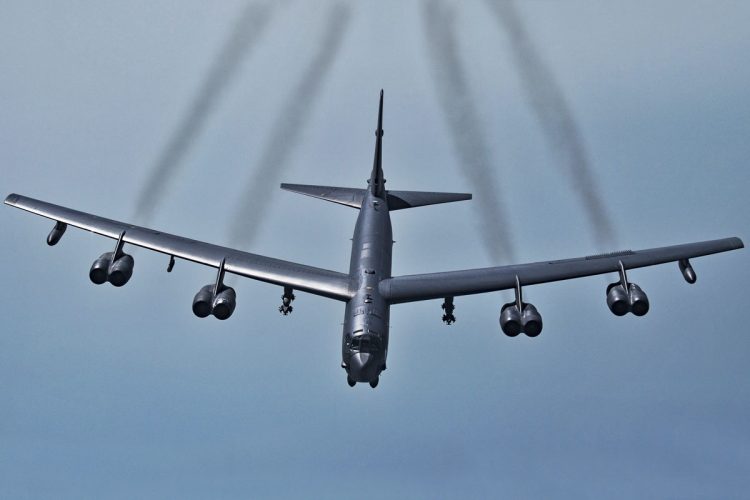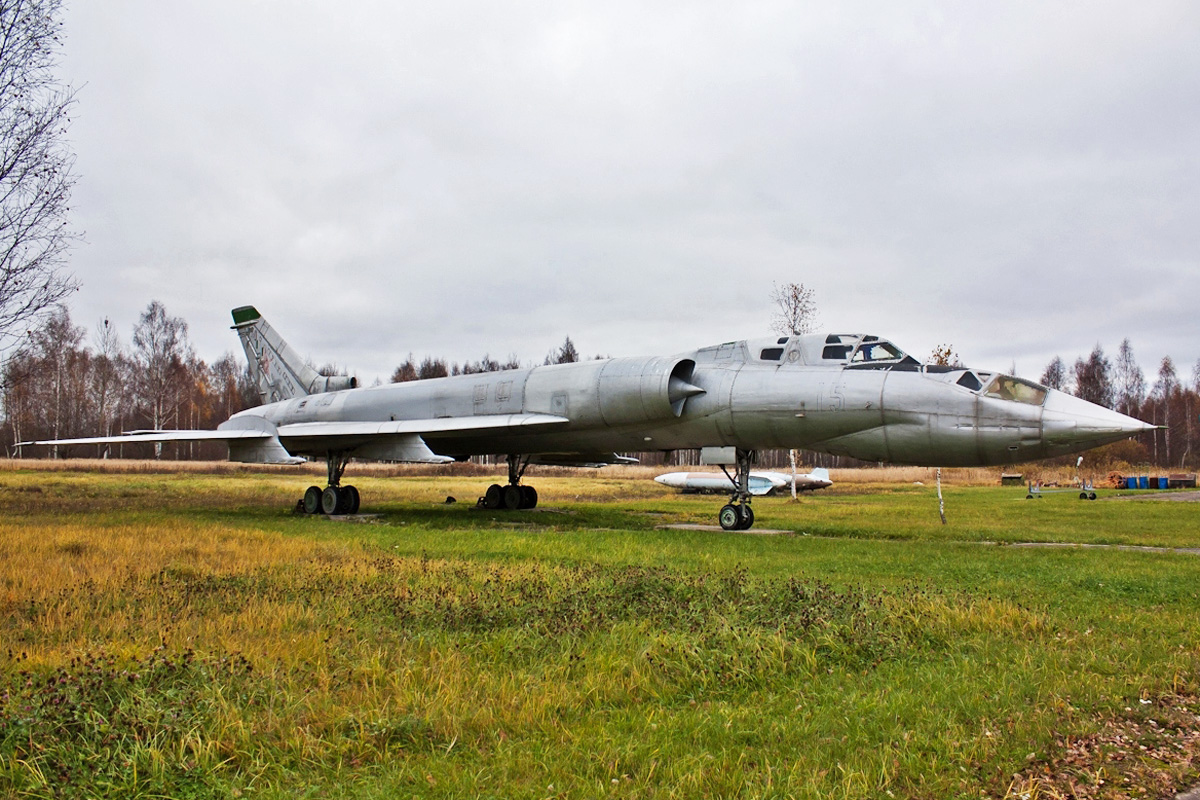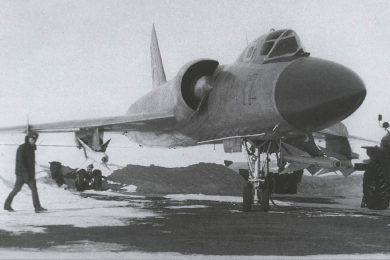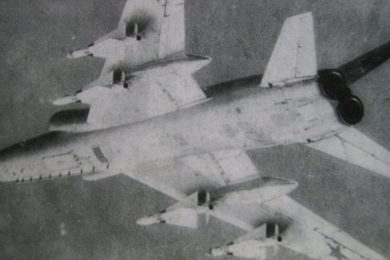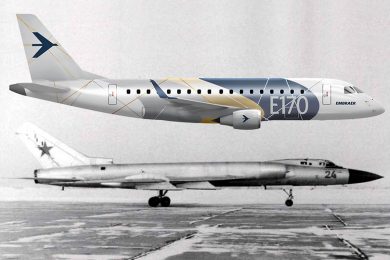Imagine a fighter jet longer than a regional jet and three times heavier than a Saab Gripen. It seems unlikely, but that plane, the Tupolev Tu-128, did exist. It is still the largest interceptor that has ever entered service, with a length of 30 meters and a maximum take-off weight of 43 tons. The massive aircraft created by Tupolev first flew in the early 1960s and operated exclusively in the Air Force of the Soviet Union until just before the end of the communist government.
The “Fiddler“, as it was named by NATO, is a case where the lack of technology has been made up for by force. With the largest linear border in the world, the country struggled to keep watch over its most remote corners in the 1950s, when the Cold War was going through its most turbulent days. United States nuclear bombers like the famous B-52 were a real threat and the PVO (Soviet Air Force) did not have a fighter capable of covering a very large area.
Although it had formidable aerial combat fighters like the MiG-15 and MiG-17, the Russians lacked a high-altitude and long-range interceptor, despite some Sukhoi models such as the Su-15 being part of that service. When giving the green light for the development of a jet with these characteristics, the Kremlin preferred to choose the Tupolev design office, after a first attempt with the manufacturer Lavochkin to produce the La-250, an interceptor with two engines and delta wings that ended up canceled.
Without a predecessor to rely on, Tupolev chose to use the failed Tu-98 supersonic bomber project as a starting point. The work started in 1958 with complex requirements to be met. The new interceptor should be able to fly fast, have a fairly large range, have an efficient radar and carry air-to-air missiles powerful enough that the Tu-128 could launch them from a distance. With its exaggerated size, the fighter could not enter a dog fight due to the lack of agility.
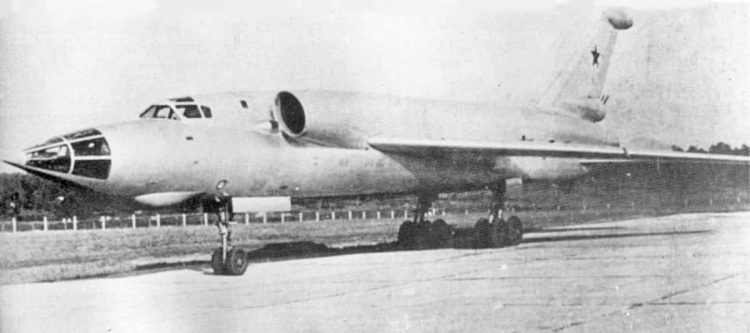
The Fiddler was a heavy aircraft, but powerful, thanks to the two Lyulka AL-7F turbojets with almost 100 kN of power each with afterburners. To achieve a long range of more than 2,500 km, the Tu-128 carried 15 tons of fuel and was able to maintain a supercruise flight, when the jet reached supersonic speed without the use of afterburners.
The missiles designed for the Tu-128 were Bisnovat R-4 (AA-5 Ash for NATO) that had two versions, one guided by infrared and the other by radar. The jet carried two pairs of each under the wings and used them together (one infrared and one radar missile) when firing at a target, so the air force considered the chance of shooting it to be greater. While the R-4T (infrared) version had a range of 15 km, the radar version reached targets up to 25 km.
Strategic change
Between the period in which it was conceived and its entry into service in the mid-1960s, the scenario for a hypothetical attack changed completely. In place of a number of heavy bombers flying at high altitude, ballistic missiles became the greatest threat in a nuclear attack. The B-52, the main source of headaches for the Russians and the reason for the existence of the immense interceptor, ended up changing its role to launching a cruise missile at an enormous distance from the target and at low altitude. In this type of mission, the Tu-128 had little to do.
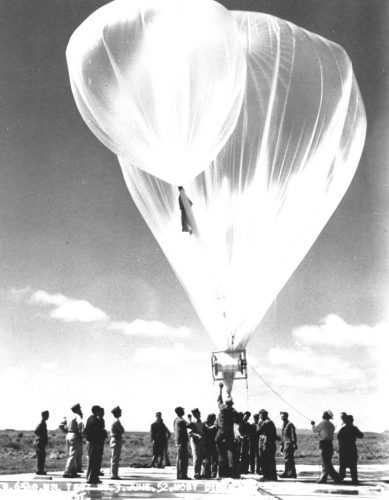
Eventually, Tupolev modernized the remaining Tu-128s in 1979 so they could detect and destroy targets at low altitude, but the jet took on a secondary role as the Soviet Air Force came to rely on more capable interceptors like the MiG-25 , capable of flying above Mach 3 and thus making up for the American advantage with the SR-71, a reconnaissance plane that succeeded the U-2 as the main US spy aircraft.
Instead of chasing planes, the Tu-128 had the controversial mission of eliminating American reconnaissance balloons that required a certain aim from its pilots.
For experienced pilots
Despite the clean and conventional design, with pronounced swept wings and negative dihedral, the Tu-128 is said to be a difficult aircraft to fly. A problem of imbalance in fuel consumption caused the fighter to tilt more to one side, in addition to requiring alignment for landing about 35 km away from the runway. For this reason, Tupolev’s crew was handpicked and among the most experienced and well-paid Air Force personnel.
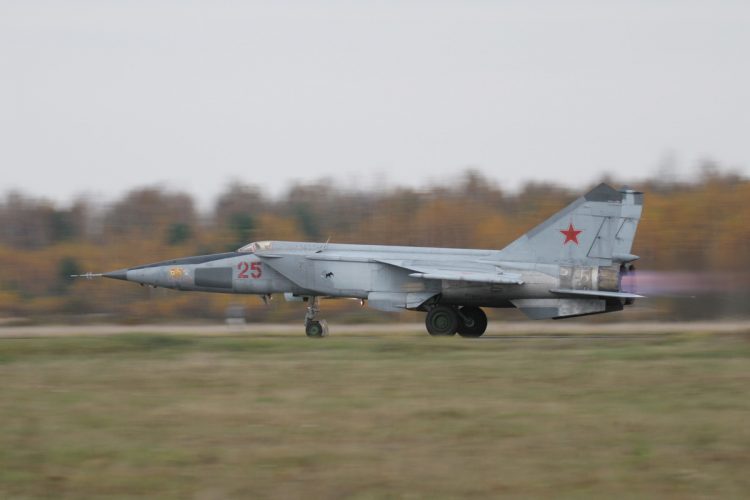
A total of 198 Tu-128 fighters were built, including 10 training versions that had a third seat, located on the nose of the plane – their strange shapes motivated the nickname “pelican”.
Only used by the Soviets, the Tu-128 was retired in 1990, a year before the collapse of communism. At the time, the Air Force was already flying with a much more advanced fighter, the MiG-31, derived from the MiG-25, with more capable avionics and armaments, however, much smaller than the Tupolev – and which will possibly never be surpassed in size by another fighter.
